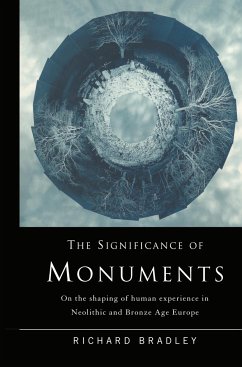The Neolithic period, when agriculture began and many monuments--including Stonehenge-- were constructed, is an era fraught with paradoxes and ambiguities. Students of prehistory have long found the highly theoretical interpretations of the period perplexing and contradictory. Starting in the Mesolithic and carrying his analysis through to the Late Bronze Age, Richard Bradley sheds light on this complex period and the changing consciousness of these prehistoric peoples. "The Significance of Monuments" studies the importance of monuments tracing their history from their first creation to six thousand years later. The book begins with a discussion of how monuments first developed and their role in developing a new sense of time and space among the inhabitants of prehistoric Europe. The second part goes on to study how such monuments were modified and reinterpreted to suit the changing needs of society through a series of detailed case studies.

